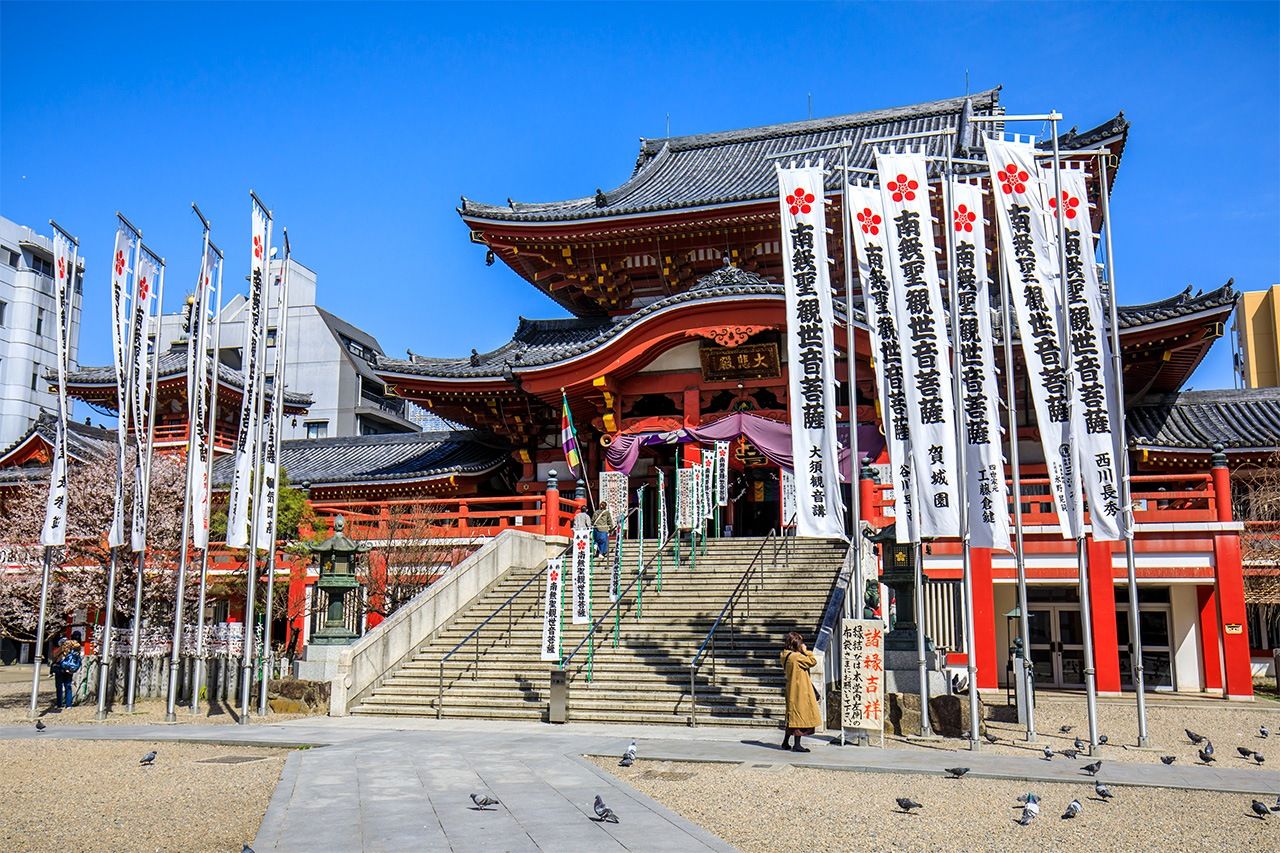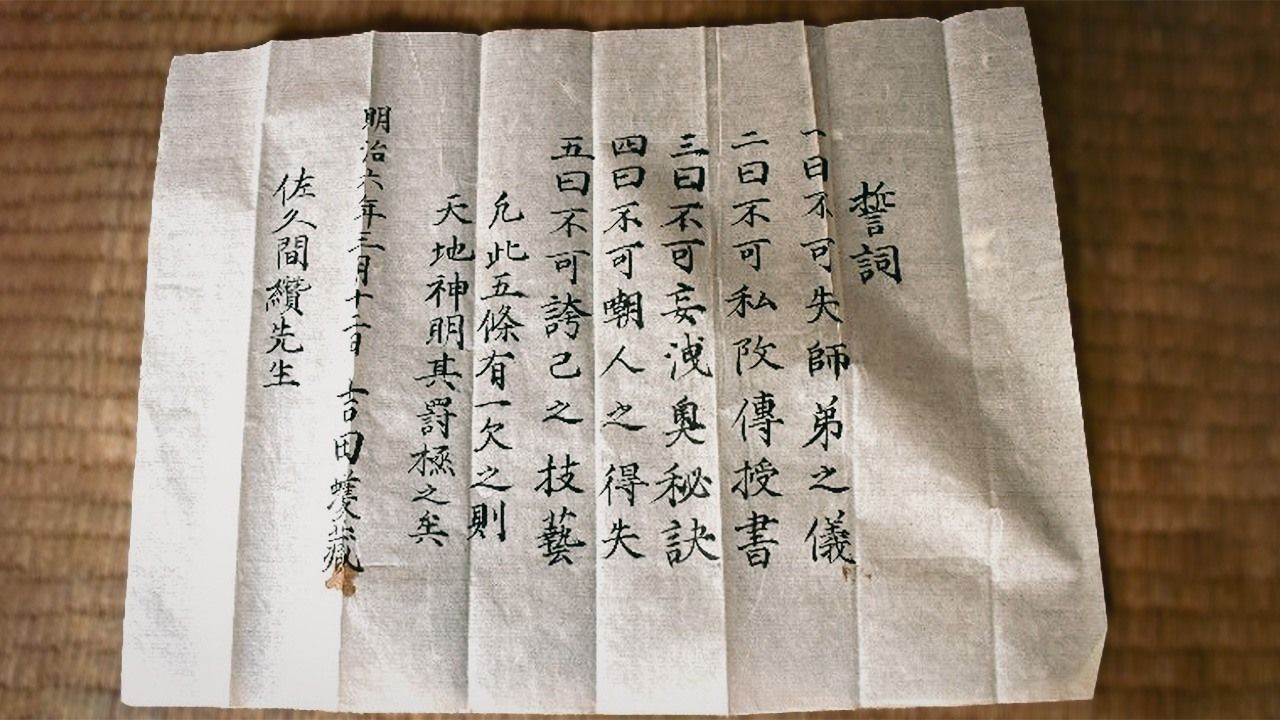
Classical Calculations: Japan’s Edo-Period “Wasan” Tradition of Mathematics
Teacher and Traveler Sakuma Yōken: Fukushima’s Nineteenth-Century “Wasan” Math Master
History Education Culture Science- English
- 日本語
- 简体字
- 繁體字
- Français
- Español
- العربية
- Русский
Related articles:
- “Japan’s Wasan Mathematical Tradition: Surprising Discoveries in an Age of Seclusion”
- “Edo-Period Teens Tackling Math’s Toughest Problems: A Historical Look at Japan’s Wasan Math”
A Thriving Wasan School in Pastoral Fukushima
Nearly an hour’s drive east of Kōriyama Station lies the Ishimori district of Funehiki in the city of Tamura, Fukushima. Amid this idyllic satoyama scenery, with rice paddies filling the level ground between the mountains, a wasan school—focusing on the native approach to mathematical learning seen in Japan in the past—flourished from the late Edo period (1603–1868) into the Meiji era (1868–1912), enrolling more than 2,000 students in all. The school was run by the mathematician Sakuma Yōken, whose private study still stands today.
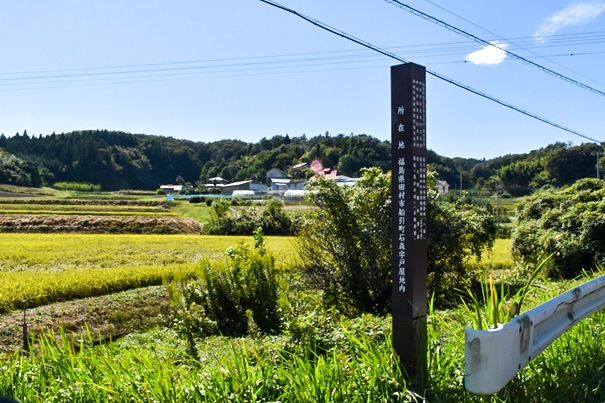
A signpost shows the way to Sakuma Yōken’s former study, with rice paddies as far as the eye can see. (© Abe Haruki)
Yōken was born Sakuma Tsuzuki in 1819. His father, Sakuma Tadasu, was also a wasan mathematician who initiated Yōken into the discipline as a young child. Between the ages of roughly 18 and 21, Yōken studied under Watanabe Kazu, a wasan mathematician of the Saijo school based in Nihonmatsu, around 20 kilometers to the north.
The Sakumas were one of the wealthier farming families in the area, and Tadasu, also a student of Watanabe’s, taught the basics of calculation to the local farmers and their families. Yōken made the trip to Nihonmatsu almost daily once his work was done, then studied at night before returning in the morning. Tadasu and Yōken’s shared dedication to mathematics made the area hallowed ground for wasan during the nineteenth century, to an extent equaled by few other sites in Japan.
According to the Tamura Board of Education, Yōken wrote or edited more than a hundred wasan books and textbooks, including Wasan kyōjuhō (Wasan Pedagogy) and Tōyō sanpō (Daily-Use Calculation Methods). At the core of his oeuvre were what are now known as “exercise texts,” in which the reader learns by solving problems. He wrote well over a thousand problems on everything from the four basic arithmetic operations and abacus technique to methods for extracting square roots, volume calculations, series, and calculating interest.
What kind of people studied under Yōken? I was able to view the student registers, now designated a cultural treasure by the city of Tamura, thanks to the kind generosity of Sakuma Motomu, Yōken’s great-grandson, who still farms the same family plot while preserving Yōken’s study and the surviving materials from the school. The registers show that most of the school’s students were farmers or merchants from Funehiki or neighboring Miharu. Around a tenth of the names are female. There are four register books in all, with annotations counting the number of students from the time of Yōken’s father Tadasu; the total number of students exceeds 2,100.
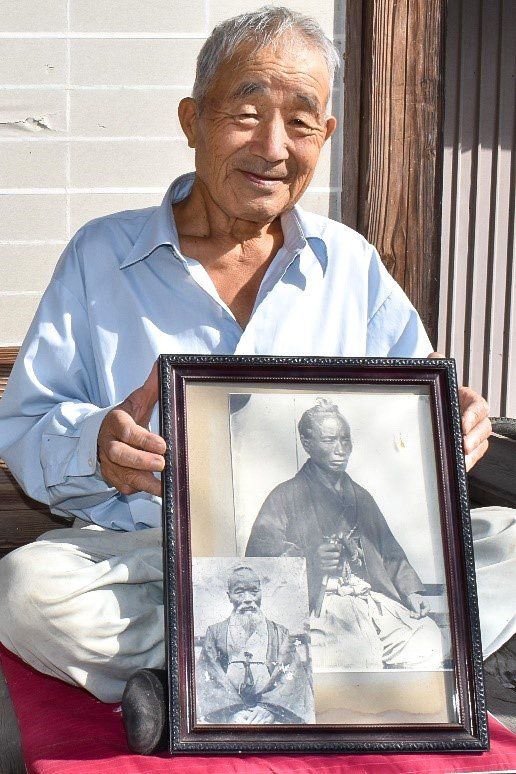
Sakuma Motomu displays photographs of his great-grandfather Sakuma Yōken. The photograph on the right shows Yōken as a young man, and the other shows Yōken in his final years. (© Abe Haruki)
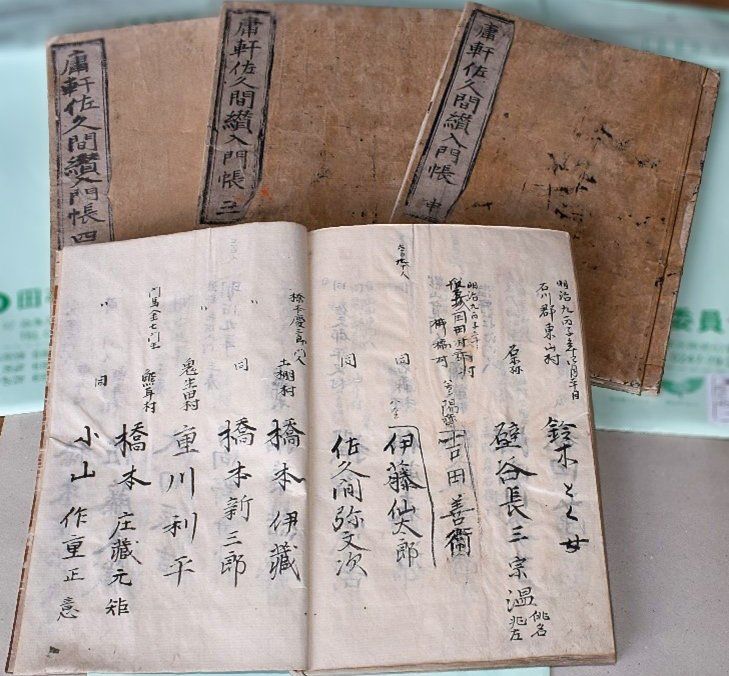
The student registers preserved by the Sakuma family. At far right is the female name Toku. (© Abe Haruki)
Nakazawa Ichio of the Funehiki Sakuma Yōken Wasan Preservation Society says that Yōken’s school was a gijuku, meaning a school that accepted students irrespective of class or gender; the only requirement was a burning desire for knowledge. Those who were accepted as students sealed the enrollment agreement with their own blood. The agreement’s text included admonishments such as: “The master-disciple relationship must be respected, and there must be no sneering at the successes or failures of others, nor boasting of one’s own abilities.”
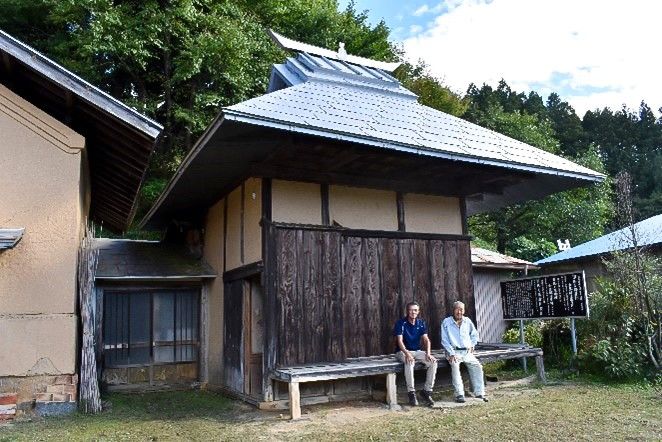
Nakazawa Ichio of the Funehiki Sakuma Yōken Wasan Preservation Society (left) sits outside Yōken’s study with the mathematician’s great-grandson Motomu. In former decades the building had an attached dormitory. (© Abe Haruki)
Mathematical Training for Civil Surveyors
Yōken’s mathematical prowess saw him awarded samurai status and engaged to teach at the school for the warrior class of Miharu domain. After the Meiji Restoration of 1868, he was temporarily involved in surveying as an official of Iwasaki Prefecture, a short-lived prefecture centered on the coastal Hamadōri region of modern Fukushima. Many of his students went on to be surveyors as well. The Asaka Canal Project, which successfully irrigated the fields of Asaka in Kōriyama, thought to be barren ground, with water from Inawashiro Lake to the west, is often credited to the project’s supervisor, Dutch surveyor Cornelis Johannes van Doorn, but it was students of Yōken like Itō Naoki whose careful measurements of the site were the driving force for the project’s success.
Did Yōken ever post a sangaku, one of the wooden plaques dedicated to temples to commemorate a successful mathematical proof? According to Nakazawa, in 1837, at the age of 19, Yōken posted a sangaku with a problem involving circles and a triangle at the Kannon Hall in the temple Tōdōsan Manpukuji (Ono, Fukushima). Sadly, the sangaku was lost in a fire, but records of it survive. It shows a simpler way to solve the problem than was described on an earlier sangaku.
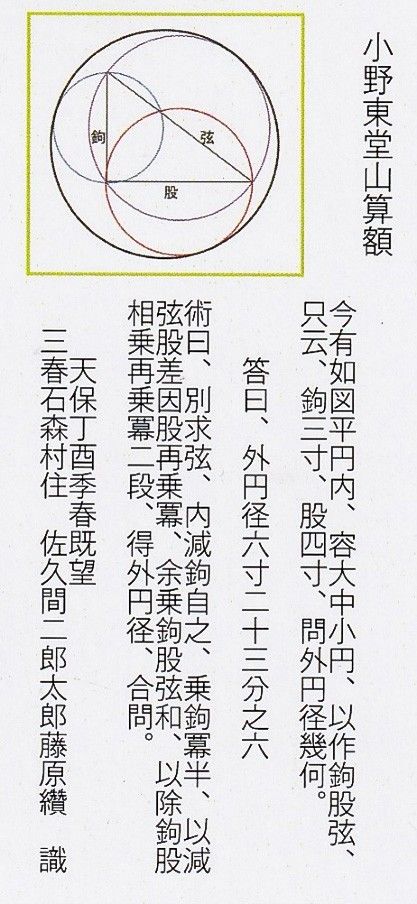
Diagram and solution for the problem on Yōken’s sangaku. (Courtesy Nakazawa Ichio)
Several sangaku posted at shrines and temples in the prefecture by Yōken’s students do survive. Two of them, from Akitasan Ryūon’in temple in Tamura and Kobiragata Tenmangū temple in Inawashiro respectively, are well preserved, so they are included below.
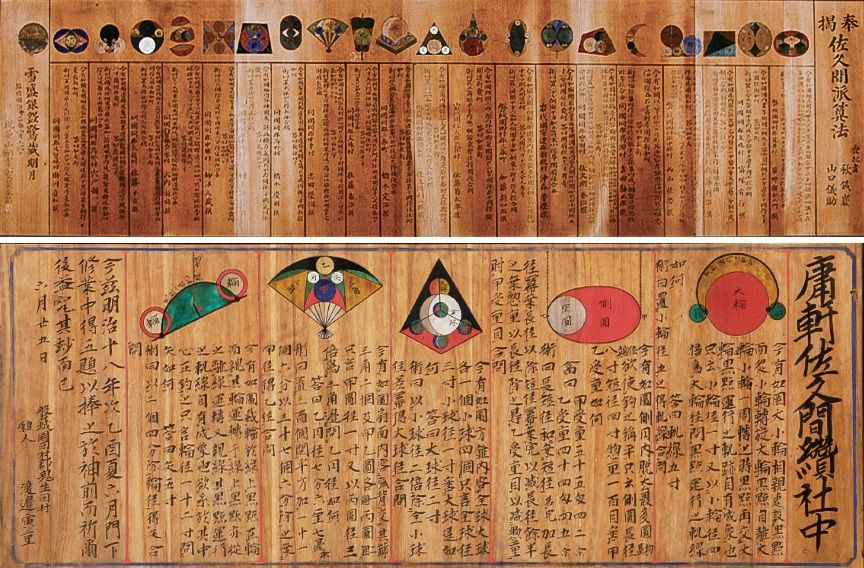
Top: Sangaku at Akitasan Ryūon’in temple (posted 1893). Bottom: Sangaku at Kobiragata Tenmangū temple (posted 1885). (© Abe Haruki)
Itinerant Wasan Mathematicians: Yōken’s Six Great Journeys
Another noteworthy detail of Yōken’s life is the many journeys he took to expand his mathematical knowledge. Wasan had no “capital,” the way Paris was the “Capital of the Arts” or Vienna the “Capital of Classical Music”; wasan masters could be found all over Japan, so more than a few mathematicians seeking to learn more about the discipline traveled the country participating in “multischool contests” or undergoing “warrior training” at renowned schools and dōjōs. Even Yōken’s teacher Watanabe Kazu had experienced a “dōjō challenge” by the famous mathematician Aida Yasuaki.
As the story goes, it happened when Watanabe was 22. Aida, having heard of the rising young mathematician, dropped by Watanabe’s school en route from Edo to a visit to his hometown in Yamagata. Aida put Watanabe to the test with some difficult problems involving higher-order equations. When Watanabe solved the problems and posed some of his own, Aida answered them without hesitation. “Ridiculous!” Watanabe exclaimed. “There must be some mistake!” He ended the meeting early, but when he checked the answers closely he realized they were correct. Accepting Aida’s proficiency, Watanabe became his disciple.
According to Nakazawa’s research, Yōken made six major journeys:
- A pilgrimage to sacred sites on Mount Katta and the island Kinkasan near Sendai (Miyagi) (1840)
- A pilgrimage to Ise, Kumano, the 33 Kannon of Shikoku, Mount Konpira, and the temple Zenkōji (1842)
- A pilgrimage to Mount Fuji (1844)
- Mathematical training in Yamagata (1846)
- Mathematical training in Amakusa (Kumamoto) (1858)
- Mathematical training in Sakata (Yamagata) and Echigo (Niigata) (1862)
Yōken also visited Edo several times. These travels appear to have been motivated by interest in the sangaku on display at different temples and shrines, as well as his strong faith in Kannon. At sites dedicated to Kannon across Japan, he prayed for the bodhisattva’s aid as he strove for greater mastery of mathematics, and offered gratitude for his progress to date.
Nakazawa finds Yōken’s fifth journey, in which he visited Kyūshū, particularly intriguing. The journey was a long one, lasting from the ninth month of 1858 to the second month of the following year, and Yōken’s diary of events along the way and meetings with other wasan mathematicians covers six volumes. Thirty-six wasan mathematicians are mentioned by name, but Nakazawa sees Yōken’s time in Nagasaki as the core of these travels. Yōken spent 12 days in Nagasaki, longer than any other location he visited on that journey. His acquisition of knowledge of European mathematics—which had entered the city via the naval training center the shogunate had established there—through interactions with local mathematicians was the greatest benefit he reaped from the trip. After returning to Fukushima, Yōken allotted roughly half of the lesson time at his school to European mathematics.
Itinerant Mathematician—and Star of a Ukrainian Manga?
Wasan masters who traveled frequently, like Yōken, were known as yūreki sanka: “itinerant mathematicians.” One of the best-known yūreki sanka was Yamaguchi Kazu. Yamaguchi was born around 1780 in what is today the Suibara district of Agano, Yamagata, but studied wasan in Edo. In the decades before his death in 1850, he made six great journeys that took him from northern Tōhoku to the island of Kyūshū. His second and third journeys were particularly lengthy, lasting one year and nearly two and a half years, respectively. The travel journals he kept describe interactions with mathematicians across Japan as well as numerous sangaku that he saw on display. Many of these no longer exist, making Yamaguchi’s journals an invaluable source preserving lost sangaku for modern-day researchers. On the other hand, there are virtually no records about Yamaguchi himself.
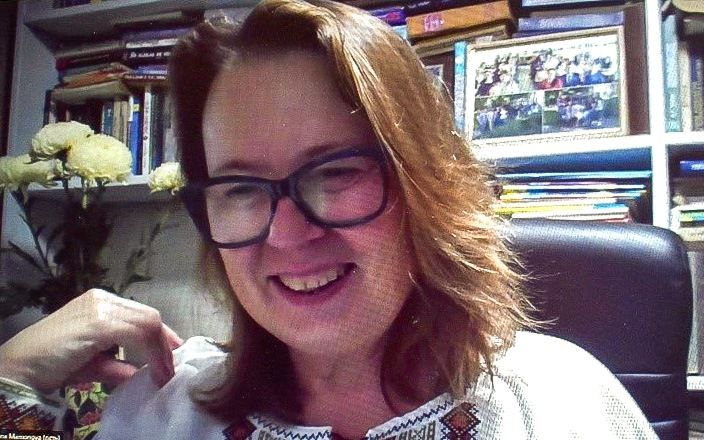
Ganna Mamonova in Kyiv during an online interview. (Courtesy Abe Haruki)
Ganna Mamonova is a Ukrainian researcher who was a visiting scholar at Tsuji Lab (“Babylab”) at the University of Tokyo’s International Research Center for Neurointelligence from August 2022 through July 2024. She is exploring the possibility of introducing Yamaguchi in her own work.
Mamonova is an associate professor in mathematics at Kyiv National Economic University, specializing in probability. One of her current research topics is the utility of manga in mathematical pedagogy. At Babylab, she was involved in creating a Japanese translation of her comic book Fun with Combinatorics. During the process, she learned about sangaku and their broad intended audience. When she read wasan researcher Fukagawa Hidetoshi’s Sacred Mathematics: Japanese Temple Geometry, she found herself drawn to the wandering figure of Yamaguchi Kazu.
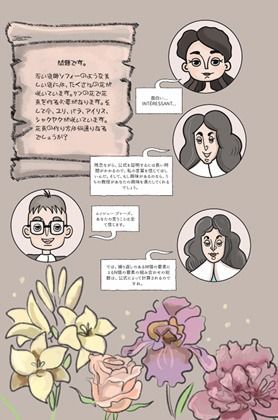
A panel from Mamonova’s comic book Fun with Combinatorics, with art by Tatiana Denisenko. (Courtesy of Ganna Mamonova)
Mamonova’s comic book Fun with Combinatorics features the brilliant seventeenth-century philosopher, mathematician, and physicist Blaise Pascal in a range of everyday scenes, challenging the reader to find how many ways various things can be combined. In her next comic book, Mamonova plans to discuss Japan’s wasan mathematicians, with Yamaguchi Kazu as the main character.
“The Edo period was so peaceful that people could travel to study mathematics, which is a precious thing,” says Mamonova. “It was a time when people could choose to be rational, and Yamaguchi symbolizes this. If possible, I’d like to visit Kyoto and other places Yamaguchi visited, learning more about his travels and sangaku and developing my vision for the book.”
Until 2022, Mamonova actually lived in Bucha, many of whose residents were massacred by the Russian army in that year. She came to Japan on an emergency acceptance program at the University of Tokyo for scholars and students fleeing the conflict. Now back in Ukraine, she is in a relatively safe area, but our interview was performed with the understanding that it would be cut short immediately if air raid warnings sounded.
According to Mamonova, the comic translated while she was in Japan will be used by the educational publisher Gakken as a reward for donors to its crowdfunding project to support rebuilding the devastated educational facilities of Bucha. “I hope we receive support from many people,” says Mamonova.
The Biggest Fracas in Wasan History, Under Kannon’s Roof
Finally, let’s look at what might have been the biggest fracas in the history of wasan. Our setting is Ōsu Kannon in Nagoya, then part of the Owari domain, and the story begins with a sangaku posted there in 1799 by a mathematician who lived near Nagoya Castle. According to Fukagawa, that sangaku no longer exists, but the details of the ensuing events can be found in the 1812 book Kitano sankei.
The sangaku proposed the following problem: Three ellipses are enclosed by a single circle, touching it along its circumference. Given the lengths of both axes of all three ellipses, what is the diameter of the outer circle? A different mathematician criticized the answer provided, but Fukagawa reports that this criticism was erroneous, and so a third mathematician posted a sangaku critiquing it in turn. However, the diagram on this third sangaku also had errors, which only made matters worse.
The matter began to draw in itinerant mathematicians and amateurs, and with school prestige on the line, words like “farce,” “embarrassment,” and “ridiculous” flew freely through the air. Things went well beyond scholarly debate, with vitriolic arguments conducted via sangaku for six years in all. There is no record of the final outcome, but the common folk were said to have greatly enjoyed watching all this mudslinging in the prestigious temple. This, too, is the kind of entertainment only available in times of peace.
(Originally published in Japanese. Banner image: Sakuma Yōken’s wasan school and the agreement required of newly enrolled students. “Laughing at others’ mistakes” and “Bragging about one’s own abilities” are both prohibited. © Abe Haruki.)

